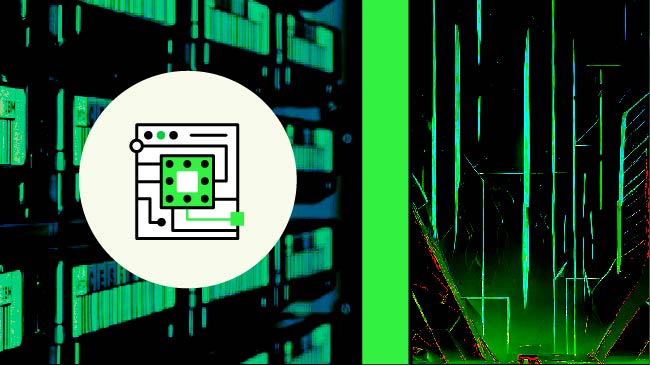IBM’s Spyre AI Accelerator Gets Oct. 28 GA for Mainframes, December Debut for Power11
The PCIE-attached card will join forces with the Telum II processor to enhance on-premises processing for AI workloads

Positioned by IBM as an AI powerhouse in its own right, the z17’s Telum II processor will soon get a companion for AI workloads in the form of the Spyre accelerator, set for general availability Oct. 28.
IBM announced the GA date at its TechXchange conference in Orlando, Florida, on Oct. 7, ushering in new capabilities for AI inferencing on the mainframe. Produced with 5 nm technology, each PCIE-attached Spyre card includes 32 AI-optimized cores, 25.6 billion transistors and 128 GB of LPDDR5 memory, delivering 300 TOPS of performance.
The hardware will also be available for the IBM LinuxONE 5 system, and will come to Power11 servers in early December, IBM announced. Mainframe systems can accommodate up to 48 Spyre cards, while Power11 servers can each be fitted with 16.
Deploying AI While Keeping Data Close
With Spyre, the mainframe is getting a boost in its ability to process AI workloads on-premises, which allows enterprises to keep their data in-house and avoid the security dangers that can come with sending it elsewhere for processing.
Spyre will help address the specialized requirements of IBM customers, Tina Tarquinio, senior VP of product management, IBM, noted at a press briefing previewing the GA announcement. “Our clients are very unique in terms of their security, resiliency and scalability needs,” Tarquinio said.
A Tag-Team Approach
One of the key ideas behind Spyre is multi-model processing, which allows systems to use various types of models to tackle AI workloads, helping to provide more accurate results for complex cases. For instance, a workflow may call for initial inferencing to take place on the Telum II chip using a smaller model. Next, low-confidence scores may be moved to Spyre for a second pass with a larger model.
The original Telum chip brought AI processing to the mainframe for the first time with its inclusion in the z16, and the Telum II carries that capability forward with a 4x increase in compute power, Christian Jacobi, IBM Fellow and CTO, IBM Systems Development, told TechChannel after Spyre and Telum II were announced in August 2024.
The Telum processors specialize in predictive AI workloads involving structured data, like number sets. Now, for the first time, Spyre gives the mainframe the ability to also run large language models (LLMs), Jacobi said.
Hardware-Software Synergy
Operationalizing the new mainframe capabilities is an optimized software stack that includes IBM watsonx Assistant for Z, AI Toolkit for IBM Z and IBM LinuxONE, and Machine Learning for IBM z/OS—all in keeping with IBM’s approach to product design.
“IBM is a full-stack company. From semiconductors to chip design, system, low-level software, operating system, middleware, applications and consulting, we bring the entire stack together,” Mukesh Khare, GM of IBM Semiconductors, said when the z17 was announced in April.
Spyre is the first commercialized product to come out of IBM’s Hardware Research Center, established in 2019 “with a goal of 2.5x efficiency improvement year over year—and a long-term vision of 1000x improvement over 10 years,” Khare said.
Software Announcements
Meanwhile, IBM is continuing its emphasis on agentic AI, announcing at TechXchange several new enhancements to watsonx Orchestrate, a framework for managing and governing AI agents. New tools within Orchestrate include:
- AgentOps: An agentic observability and governance layer that provides full lifecycle transparency, allowing for real-time monitoring and policy-based controls
- Agentic workflows: Standardized, reusable flows that sequence multiple agents and tools
- Langflow integration: A drag-and-drop visual builder, now in tech preview but expected to hit GA in late October
Another AI announcement from TechXchange, Project Bob, is an “AI-first” integrated development environment. Leveraging LLMs including Anthropic Claude, Mistral, Llama and IBM Granite. Currently in tech preview status, Project Bob is promising to:
- Ease large-scale modernization with automated system upgrades, framework migrations and context-aware code refactoring across large code bases
- Code generation and review: Address architecture patterns, security requirements and compliance obligations
- End-to-end orchestration: For modernization, testing and remediation tasks
- Security help: Testing early in the software cycle (“shift left”), expedited FedRAMP hardening and facilitation of quantum-safe cryptographic migration
The AI Transformation Continues
“We are going through a business transformation we have never seen before,” Dinesh Nirmal, senior VP, IBM Software, said as he introduced the new products at TechXchange. “This is going to change the way we interact, the way we communicate, the way we commerce, and it’s happening on a daily basis.”